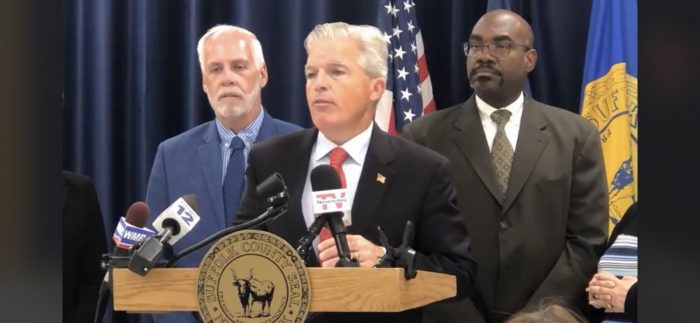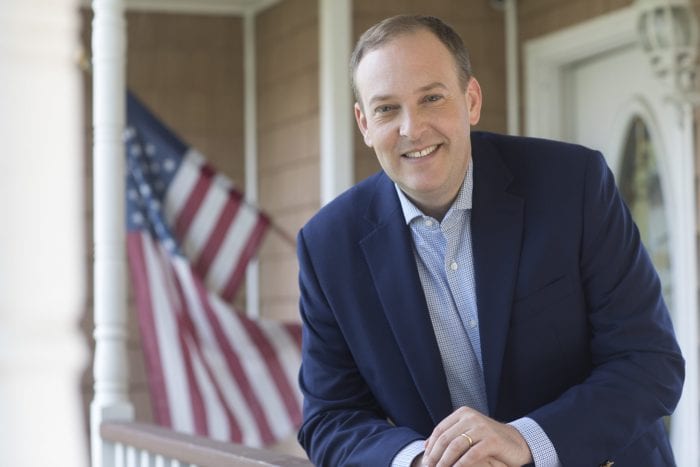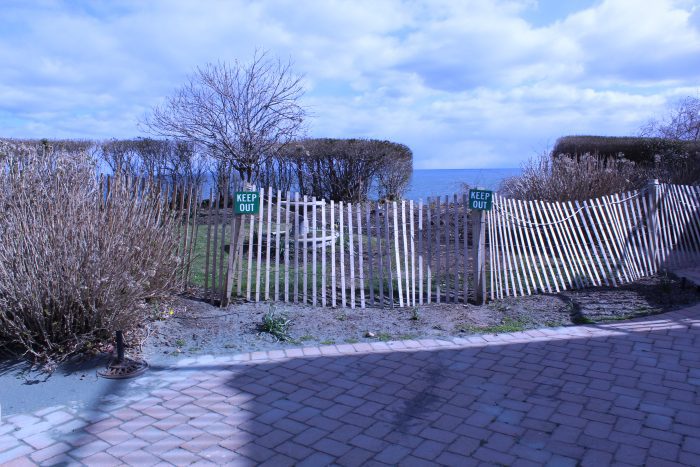Members of the Port Jefferson Station/Terryville Civic Association deliberated on a range of issues during their monthly meeting held on Tuesday, July 26 at the Comsewogue Public Library.
Redistricting
Headlining the meeting was Town of Brookhaven Councilmember Jonathan Kornreich (D-Stony Brook), who addressed the ongoing redistricting process for the Brookhaven Town Council, calling the current redistricting scheme a threat to his district.
“The intention of redistricting is to rebalance election districts — council districts, for example — based on population changes,” he said. “But in practice, what happens is that both political parties tend to take advantage of this to redraw districts that they believe will be more favorable to their own party.”
Kornreich, who represents Council District 1, will see significant changes to his district’s boundaries if the current plans are approved. The proposal for Council District 1 is to transfer roughly half of the Port Jefferson Station and Terryville community into Council District 2. In exchange, CD1 would receive roughly half of Mount Sinai.
“It is unclear to me what is going to be gained from this,” Kornreich said.
What will be lost is the continuity of planning and progress that he believes has characterized his tenure in the district. “All it does is split the hamlet. … It splits this hamlet that we have worked so hard to work on together.”
The consequence, Kornreich fears, is that public investment in the PJS/Terryville area will be diluted and redirected to areas with greater voting power. He urged community members to attend upcoming hearings of the Brookhaven Redistricting Committee.
“This is a time for community unity,” the councilmember said. “You understand what’s at stake. So get educated about it and speak up on behalf of your community.”
Ed Garboski, PJSTCA president, spoke of the ways in which the community has come together in the past to protect its interests. He considered the current redistricting controversy a cause for collective concern and action.
“We need to come together,” he said. “We have to have a voice, and it has to be a loud voice.”
Several members agreed to attend the Tuesday, Aug. 2 public meeting held at 6 p.m. at the Rose Caracappa Senior Center in Mount Sinai to resist the current redistricting plans.
Jefferson Plaza
Another order of business was discussion on the proposed redevelopment of Jefferson Plaza, an expected $100 million investment by the Hauppauge-based real estate group, Staller Associates.
Members considered preparing a statement relating to several inquiries regarding traffic, architectural design, community benefit initiatives and the preservation of the historic character of the area.
“I like the general approach of this concept,” said one civic association member. “I just don’t want to see a rush to judgment. I want to see us work together collectively to fine-tune it in the best possible way.”
Public safety
Two officers from the Suffolk County Police Department attended the meeting. Several of the members expressed their frustrations over frequent acts of “aggressive panhandling” throughout the area, requesting a greater police presence in the areas where the practice is most widespread.
One member raised the issue of speeding along Canal Road, which he said has been “constant on Canal ever since they fixed the road.”
Noise pollution generated by loud mufflers has also created a public disturbance. While there are laws regulating loud mufflers, the Suffolk police officers said that they are restrained in enforcing them due to provisions in the law that require a measurement of decibels.









 We live in a wonderful place with many delightful offerings, but we probably don’t take the time to dwell on that fact. For example, even this past Thursday alone, we could have attended the opening night of the Stony Brook Film Festival, screening indie movies from throughout the world at the Staller Center on the campus of Stony Brook University. Or we might have tapped our feet and kept time with a performance at The Jazz Loft in Stony Brook village. The Huntington Summer Arts Festival has ongoing performances, this past Thursday featuring Lakecia Benjamin & Pursuance that started at 8 p.m. in Heckscher Park.
We live in a wonderful place with many delightful offerings, but we probably don’t take the time to dwell on that fact. For example, even this past Thursday alone, we could have attended the opening night of the Stony Brook Film Festival, screening indie movies from throughout the world at the Staller Center on the campus of Stony Brook University. Or we might have tapped our feet and kept time with a performance at The Jazz Loft in Stony Brook village. The Huntington Summer Arts Festival has ongoing performances, this past Thursday featuring Lakecia Benjamin & Pursuance that started at 8 p.m. in Heckscher Park.







